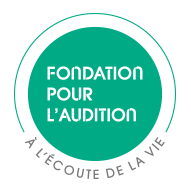MOSER Tobias
Project status: closed
Tobias Moser is an ENT Doctor, Professor of Auditory Neuroscience and Founder of the Institute for Auditory Neuroscience and InnerEarLab at the Göttingen University Medical Center in Germany. He also heads up research teams at the Max Planck Institute for Biophysical Chemistry, the Max Planck Institute for Experimental Medicine and the German Primate Center in Göttingen.
His current research aims to improve cochlear implants through optogenetics, an innovative technique combining optics and genetics.
HIS CAREER
After graduating in medicine from the University of Jena in Germany in 1995, Tobias Moser undertook postdoctoral research in biophysics at the Max Planck Institute for Biophysical Chemistry in Göttingen. In 2001, he created his own laboratory, the InnerEarLab, at the Göttingen University Medical Center. At the same time, he pursued his medical specialization in otolaryngology, which he completed in 2003. In 2007, he was appointed Professor of Auditory Neuroscience and Research Director. In 2015, he founded the Institute for Auditory Neuroscience and assumed its leadership.
As a world-renowned expert in the cochlea and sensory hair cells, Professor Tobias Moser has received numerous distinctions, including the Gottfried Wilhelm Leibniz Award of the German Research Foundation in 2015.
HIS AWARDED RESEARCH
Professor Moser has focused his career on explaining the cellular and molecular mechanisms that transform the sound vibrations received by the ear into electrical impulses transmitted to the brain via the acoustic nerve. This process takes place in the cochlea, a tiny organ in the inner ear. It requires highly precise communication between the hair cells in the inner ear, which receive the sound vibrations, and the neurons in the acoustic nerve.
Currently, Professor Moser is aiming to exploit his discoveries to improve the performance of cochlear implants, the electronic auditory implants that have restored hearing to people with profound hearing loss for 30 years, although with imperfect results, given the technical limitations. In fact, electrical stimulation of the acoustic nerve by electrodes implanted in the cochlea is imprecise and does not restore the full range of frequencies normally perceived by the ear. This makes it hard for patients to follow a conversation in a noisy environment or enjoy listening music.
An enlightened innovation
In recent years, Professor Moser and his team have designed an optical cochlear implant to replace traditional electronic implants, based on a new technology to stimulate the acoustic nerve, optogenetics.
How does it work? First, a light-activated protein-coding gene is inserted into the cochlear nerve cells, which become sensitive to light. The implant transforms sound vibrations into light signals, which are carried by optical fibers into the cochlea. The acoustic nerve is then stimulated very delicately by the light generated by the implant. Tobias Moser’s team recently confirmed the feasibility and efficacy of this approach in rodent models of human deafness.
What makes this optical implant particularly interesting is its resolution, which is considerably higher than electronic cochlear implants. This disruptive innovation promises a considerable improvement in the quality of restored audible sound, especially that of music and speech in noisy background.
Building on these encouraging results, Professor Moser has founded OptoGenTech, a start-up focusing on the development of the optical cochlear implant for patients.
Professor Tobias Moser
ENT surgeon, Professor of Hearing Neuroscience et founder of the Institute for Auditory Neuroscience
Director of research at the Max Planck-Institute and at the German Primate Center
Göttingen, Germany
Related scientific publication(s):
- Antoine Tarquin Huet, Tobias Dombrowski, Vladan Rankovic, Anupriya Thirumalai, Tobias Moser. Developing Fast, Red-Light Optogenetic Stimulation of Spiral Ganglion Neurons for Future Optical Cochlear Implants. Front Mol Neurosci. 2021 Mar 11;14:635897. doi: 10.3389/fnmol.2021.635897. eCollection 2021.
- Stefanie Krinner, Friederike Predoehl, Dinah Burfeind, Christian Vogl, Tobias Moser. RIM-Binding Proteins Are Required for Normal Sound-Encoding at Afferent Inner Hair Cell Synapses. Front Mol Neurosci. 2021 Mar 23;14:651935. doi: 10.3389/fnmol.2021.651935. eCollection 2021.
- Daniel Keppeler, Christoph A Kampshoff, Anupriya Thirumalai, Carlos J Duque-Afonso, Jannis J Schaeper, Tabea Quilitz, Mareike Töpperwien, Christian Vogl , Roland Hessler, Alexander Meyer, Tim Salditt, Tobias Moser. Hessler, Alexander Meyer, Tim Salditt, Tobias Moser. Multiscale photonic imaging of the native and implanted cochlea. Proc Natl Acad Sci U S A. 2021 May 4;118(18):e2014472118. doi: 10.1073/pnas.2014472118.
- Burak Bali, David Lopez de la Morena, Artur Mittring, Thomas Mager, Vladan Rankovic, Antoine Tarquin Huet, Tobias Moser. Utility of red-light ultrafast optogenetic stimulation of the auditory pathway. EMBO Mol Med. 2021 Jun 7;13(6):e13391. doi: 10.15252/emmm.202013391. Epub 2021 May 7.
- Burak Bali, Eva Gruber-Dujardin, Kathrin Kusch, Vladan Rankovic , Tobias Moser. Analyzing efficacy, stability, and safety of AAV-mediated optogenetic hearing restoration in mice. Life Sci Alliance. 2022 May 5;5(8):e202101338. doi: 10.26508/lsa.202101338. Print 2022 Aug.
- Aida Garrido-Charles, Antoine Huet, Carlo Matera, Anupriya Thirumalai, Jordi Hernando , Amadeu Llebaria , Tobias Moser, Pau Gorostiza. Fast Photoswitchable Molecular Prosthetics Control Neuronal Activity in the Cochlea.J Am Chem Soc. 2022 May 18. doi: 10.1021/jacs.1c12314. Online ahead of print.
- Bettina Julia Wolf, Kathrin Kusch, Victoria Hunniford , Barbara Vona, Robert Kühler , Daniel Keppeler , Nicola Strenzke , Tobias Moser. Is there an unmet medical need for improved hearing restoration? EMBO Mol Med. 2022 Jul 14;e15798. doi: 10.15252/emmm.202215798.
- Chad P Grabner, Isabelle Jansen, Jakob Neef, Tobias Weihs, Roman Schmidt, Dietmar Riedel, Christian A Wurm, Tobias Moser. Resolving the molecular architecture of the photoreceptor active zone with 3D-MINFLUX. Sci Adv. 2022 Jul 15;8(28):eabl7560. doi: 10.1126/sciadv.abl7560. Epub 2022 Jul 15.
- Lakshay Khurana, Daniel Keppeler, Lukasz Jablonski, Tobias Moser. Model-based prediction of optogenetic sound encoding in the human cochlea by future optical cochlear implants. Comput Struct Biotechnol J. 2022 Jul 6;20:3621-3629. doi: 10.1016/j.csbj.2022.06.061. eCollection 2022.
